The National Creche Scheme was formulated to serve an important need of the working mothers from poor & low-income families. Because of change in the scheme pattern and the consequent changes in funding pattern, the number of operational creches in the country has fallen by more than 60% in 5 years.
With the objective to empower women by providing day-care facilities to their children, the Indian Government implements National Creche Scheme across the country. Through the scheme, not only does the government aims to provide a safe place for the mothers to leave their wards while they are off at work, but also attempts to improve the health of children while promoting holistic development of children. The scheme serves an important need of working mothers from poor & low-income families.
This story takes a look at the evolution of the National Creche Scheme and why the numbers fell over the years.
National Creche Scheme is the continuation of erstwhile Rajiv Gandhi National Creche Scheme launched in 2006
Named after the former Prime Minister of India, Rajiv Gandhi National Creche Scheme was launched on 01 January 2006, to provide day-care facilities to children of working women and other deserving women based on their net annual income. Children aged between 6 months to 6 years are nurtured here. The central sector scheme was later revised and made a centrally sponsored scheme called National Creche Scheme in 2017. The scheme now falls under the umbrella of Integrated Child Development Services under the Ministry of Women and Child Development.
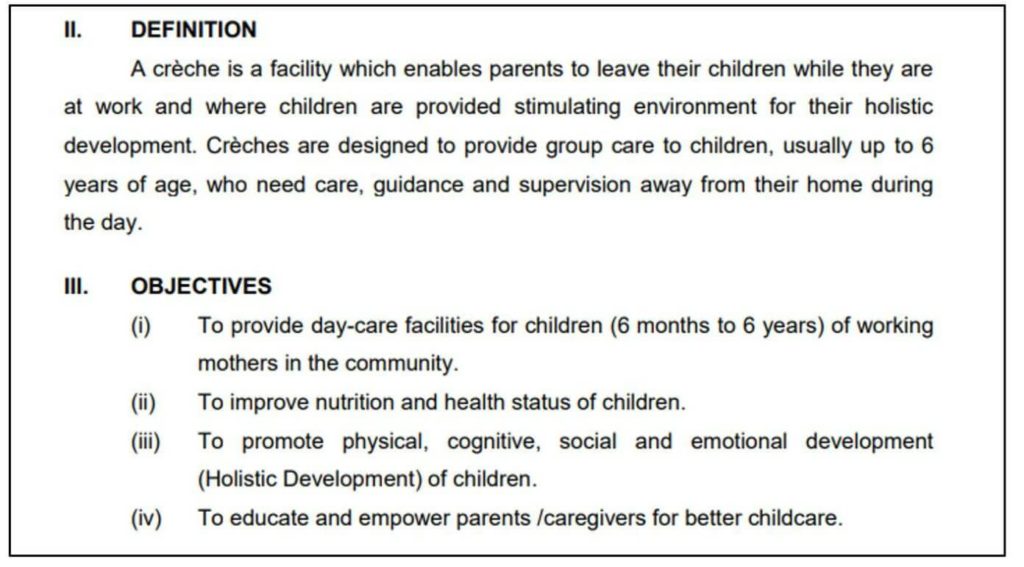
The facilities are provided for seven and a half hours each day for 26 days a month.

In addition to daycare facilities, nutrition, health and education are also looked into
Under this scheme, daycare facilities, including facilities to sleep are provided to children. In order to optimize cognitive, physical, emotional, and social skills for the holistic development of the child, for children below three years of age, early stimulation programs are also implemented. For those children above three years of age, pre-school education is provided.
In addition to this, to provide nutrition and improve their health, the government also provides locally sourced supplementary nutrition to the kids. Regular health check-ups and immunization (such as polio vaccines) are also a part of the scheme. Further, educational programs are to be conducted to educate parents about childcare.
Funding structure was revised in 2017
The current funding structure of the scheme is split among the Central government, State governments and Non-Governmental Organisations or Voluntary Organisations.

Who can avail facilities under this scheme?
The children of those women who are employed for a minimum period of fifteen days in a month or six months in a year, from both rural and urban areas are eligible to avail the facilities under the scheme. A nominal fee of Rs. 20 per child per month is collected from BPL families. In case of families with a total income up to Rs. 12,000 (both parents), Rs. 100 is collected per month per child. For families with income greater than Rs. 12,000 a fee of Rs.200 per month is collected for each child.
Government has fixed honorarium for those employed in creches
It is mandatory for each crèche to have at least one crèche worker and a helper. An ex-gratia payment of Rs. 3000 is given to the crèche worker every month. The helper is paid Rs. 1500 per month. An annual provision of Rs. 2000 is also allocated for the Pre School Education Kit. Every day, each child’s nutrition supplement is allocated Rs.12 for the 26 days a month.
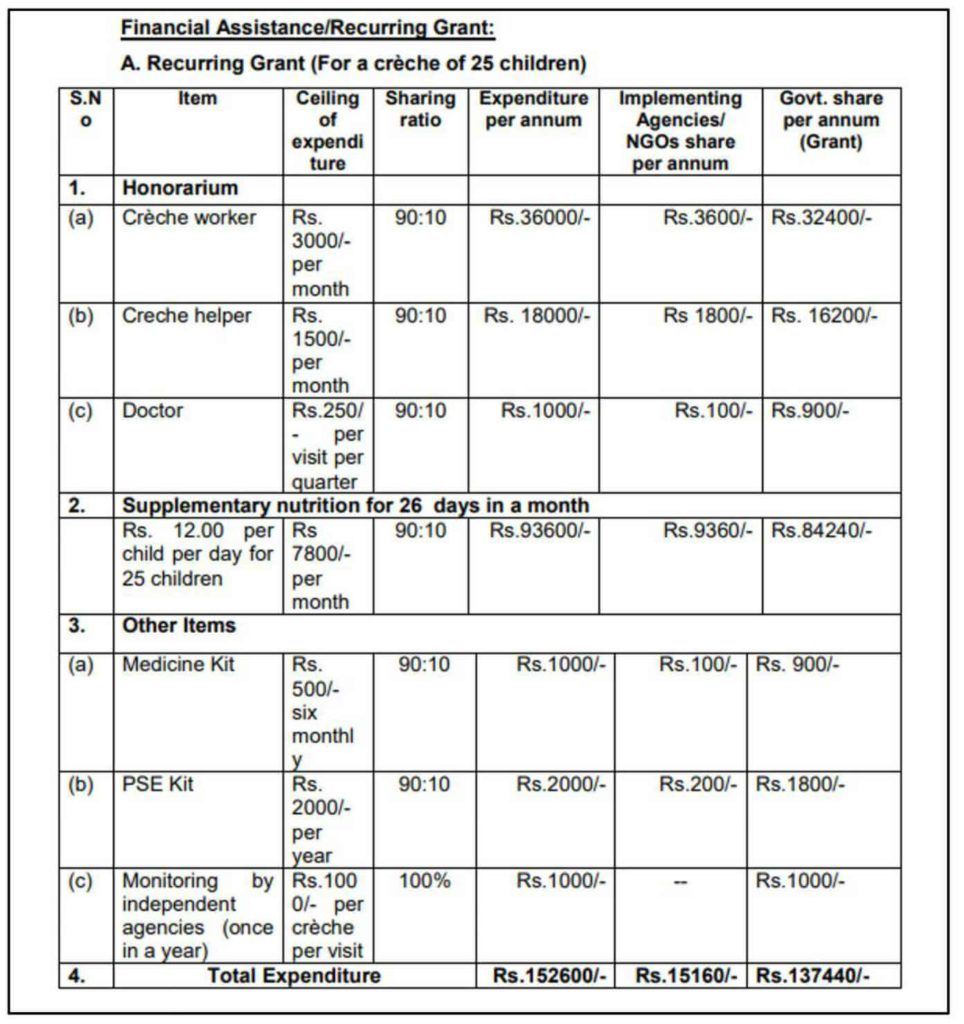
7930 creches are functional under the scheme across the country
As on 03 June 2019, a total of 7930 functional creches were operating under the scheme. In the Himalayan and North Eastern states, there were 3024 functional creches. A total of 4672 were operating in other states. UTs accounted for the remaining 234 creches.
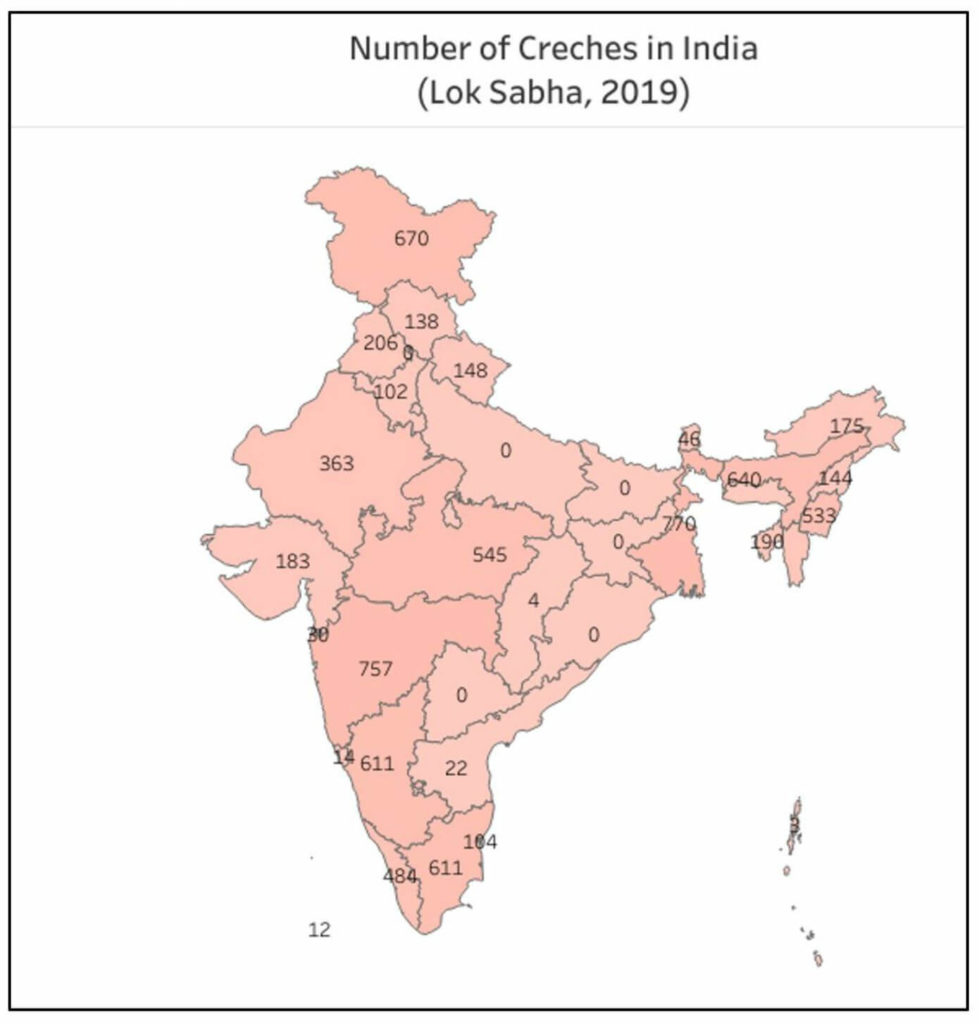
West Bengal reported the maximum with 770 creches followed by Maharashtra with 757 creches. Tamil Nadu and Karnataka reported 611 each. The states of Bihar, Jharkhand, Odisha, Telangana and Uttar Pradesh did not report any functional crèche.
Among the Himalayan and North Eastern states, Jammu and Kashmir had the highest number of creches (670), followed by Assam (640) and Manipur (533). In the case of Union Territories, Puducherry had 104 functional creches under the scheme and Delhi reported 85 creches.
Huge difference between data shared by the government in 2015 & 2017
Under the erstwhile Rajiv Gandhi National Creche Scheme, a total of 23,588 creches were operating covering over 5.9 Lakh children. Of these, more than 15,000 creches which covered more than 3.78 Lakh children were operating in rural areas. This information was provided in response to a question in the Lok Sabha 2015. However, this number is down to 7930 as per the information provided by the ministry in 2017. Reasons for more than 60% drop in the number of creches are known.
Number of creches under the scheme has declined over the years
As per the data provided by the Ministry of Woman and Child Development in 2017 in Lok Sabha, it was observed that the number of creches under the scheme decreased from 2013-14. This set of data is also different from the data shared in response to another question as noted earlier. Despite such variance in data, the drop in the number of operational creches is clearly observed.
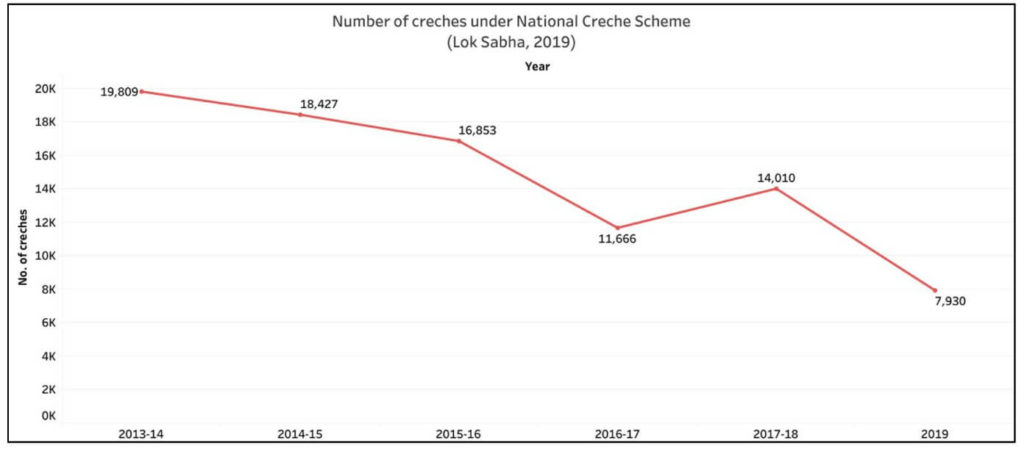
The number of beneficiaries has also dropped owing to the decrease in the number of operational creches. From 4.74 lakh beneficiaries in 2013-14, the number of beneficiaries came down to 4.46 lakhs in 2014-15, 4.2 lakhs in 2015-16 and 2.9 Lakhs in 2016-17.
The revamped scheme is now implemented through the State Governments since 2017
From the year 2017, following the change in scheme, the government is implementing the scheme through the state governments. The reason for the decline in number of creches could be because of the change in funding pattern. Earlier the central government took care of 90% of the expenses but now it has been reduced to 60%.
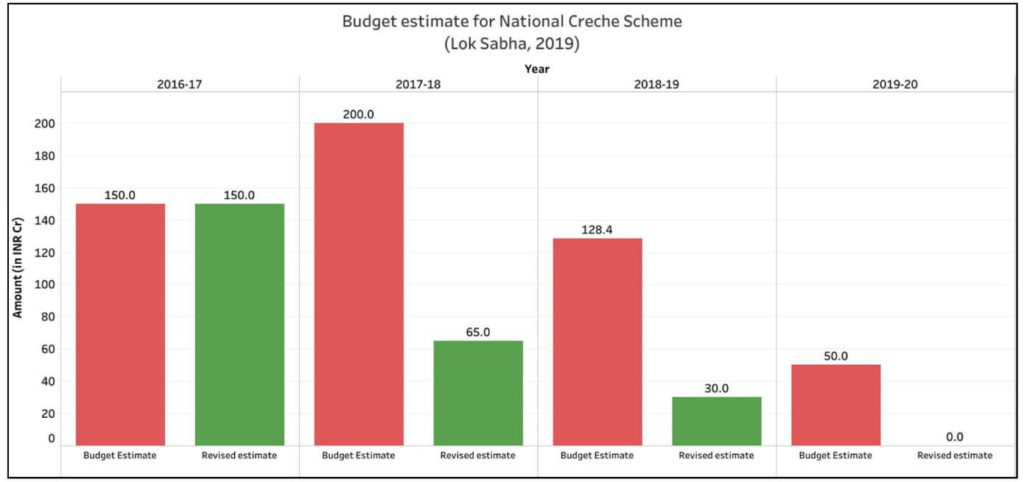
Owing to the decline in the number of operational creches, the budget allocation to the scheme has also reduced over the years.
Change in scheme guidelines & visible lack of awareness leading to reduced uptake
The scheme serves an important need for working mothers from poor & low-income families. The scheme if implemented properly could also encourage greater participation of women in the workforce. But two broad issues seem to be affecting the implementation on the ground.
Firstly, since the scheme was modified from being a central sector scheme with 90% central funding to a centrally sponsored scheme with 60% central funding, state governments do not seem to be showing the same level of interest in implementing the scheme. Secondly, the list along with the address of such creches in various parts of the country is not available in the public domain. Such lack of publicity seems to be affecting the beneficiary numbers as well.
Featured Image: National Creche Scheme



1 Comment
Easy explanation by you . Govt sponsored Creche are necessary for women’s jobs in Poor country.